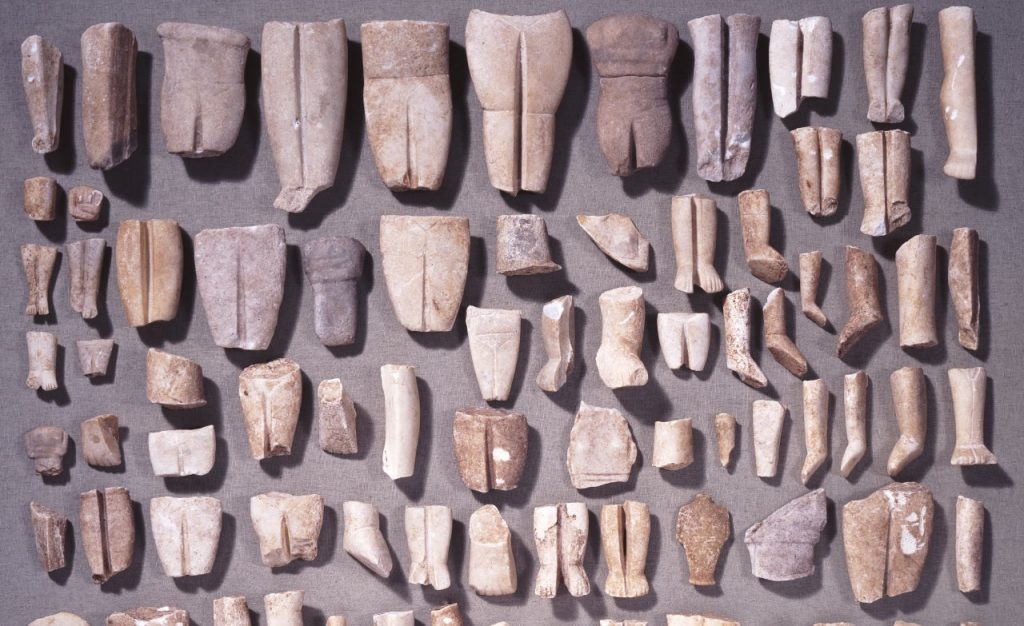The so-called “Keros Hoard” is an enigmatic group of Early Cycladic artifacts said to come from the site of Kavos on the now uninhabited islet of Keros, which lies between Naxos and Amorgos. The “Hoard” is said to have included at least 350 fragments of figurines of the “canonical” type (torsos, heads, members), a small number of marble and clay vases, obsidian blades and other minor objects of the Early Cycladic II period (2800-2300 BC). These objects were smuggled out of Greece in the 1950s and 1960s and were dispersed among various museums and private collections. The fate of many of them is unknown. A considerable number – 81 fragments – has been repatriated and is now exhibited in the MCA. Most of these pieces were acquired in 1990 and 1992, at auctions held in London, some of them with the sponsorship of the Commercial Bank of Greece.
Proper archaeological excavations undertaken in 1963, 1966 and 1967 in the looted area of Kavos revealed an exceptionally rich deposit of Early Cycladic artifacts, the overwhelming majority fragmented, but no architectural remains that could be associated with them. The way in which the objects are broken and the erosion on their fracture surfaces indicate that they were smashed deliberately in Antiquity. On the basis of this evidence it has been proposed that the site was a repository for objects of great symbolic significance and that they were broken on purpose in the context of specific rituals.

